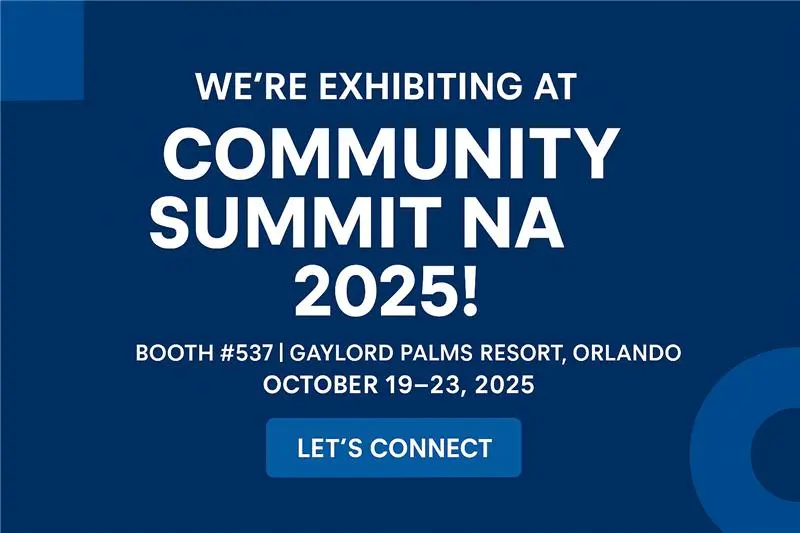Microsoft Dynamics Influencer Insights
Microsoft MVP, Chris Huntingford discusses some of the top Microsoft technology trends
In last two years, Microsoft's platform became the dev box and target of a sizable developer community, ultimately providing Windows with 16 million apps benefiting consumers and businesses. Companies are now spending more on digital technologies for frontline employees to update workflows, boost job performance, and enhance communication and workplace culture.
And, to understand how Microsoft technology is revolutionizing and what are the top trends to watch out in 2023, we interviewed Chris Huntingford.

Who did we interview?
Chris Huntingford is a Microsoft MVP, a Low Code Lead & Platform Evangelist, and a Community Lead at a Microsoft Community. He helps people safely and effectively innovate and solve business problems by creating an ecosystem of Processes, Solution portfolios, and technology.
Chris has worked around evangelizing the opportunities surrounding Power Platform and has enabled many organizations and individuals to achieve more with endless possibilities and great expertise.
Let Us Quickly Get To Our Expert's Point Of View.
Question 1- What according to you are some of the top Microsoft technology trends to watch out for in 2023?
It’s all about Low Code for me right now! I think that because of the excellent developer shortage and a HUGE demand for solutions to problems, vendors have had to innovate to make it easier for people within organizations to solve these problems.
Microsoft has done an AMAZING job of taking existing technologies within Azure, Dynamics, and Microsoft 365. And transmogrifying them into tools makers of all types can adopt to solve problems. Microsoft has democratized existing tech into an “Easier to us” layer called Power Platform.
The exciting part of this Low Code conundrum is how Microsoft, in particular, has started to infuse Artificial intelligence into both the solution-maker experience and the actual solution it’s-self.
For example, I can now write plain English that is then transformed into Power FX logic within the application layer. It's just getting WAY easier for me and others to create solutions to solve problems.
Historically makers with a moderate amount of tech experience (Using PowerPoint and Excel) would have to ask a developer or their IT department to build them something (or Buy) to solve a business problem.
However, NOW, Low Code empowers these makers to do it themselves in a governed, secure environment. Microsoft is giving the people closest to the problem the tools to solve the problem.
Question 2: What are some opportunities you would be looking at next year?
I am ALWAYS about enabling the Makers in organizations! I want to give people the power to make things! I want to build Ecosystems, not just apps.
I think we are moving out of the age of digital transformation and into an era of “Redigitization,” where we are optimizing our work.
I want to take the robot out of the human and give people more opportunity to do what matters, not just mundane, repetitive tasks that have no significant impact. I want to fuse maker experiences with business solutions and make it easy for people to do things fast and accurately without having to go over them.
Question 3: Would you like to share some tips on Dynamics 365 Implementation/Migration?
This is a VERY wide question; there is no way to answer it in a single text response because the answer is entirely consultative, in that “It Depends”.
Personally, with a focus on the Dynamics 365 Customer Engagement (Previously CRM) layer, the answer I’d give here is that the answer isn’t always Dynamics.
The D365 CE first-party applications are effectively Model-Driven Power Apps that are SUPERCHARGED with some seriously excellent functionality.
Microsoft is effectively its independent Software vendor internally. You will likely find similar comparisons to the industry cloud functionality built on top of Dataverse. You get a lot of the core D365 CE functionality available within Dataverse.
Only some things are Dynamics. Often, and in a previous life, we would implement tools like D365 for Sales to solve a “Contact Management” problem and centralize a CRM’s data structure and function.
Today, you can use the Common Data Model available in Dataverse to solve this problem and pay one-tenth of the cost to have the same functionality in a Model-Driven power app.
Another point to make here is that when implementing D365 CE as a product in the true sense to serve the actual purpose, we need to consider how to configure these products. My colleague Jason Earnshaw and I have a saying: “Keep the Core Clean.” We never configure directly against a D365 solution; we develop around it! Our solutions orbit Dynamics 365.
Question 4: What is the potential for Microsoft Partners in the UK?
HUGE! ABSOLUTELY HUGE!
We have an opportunity to provide value and help organizations change how they work. It's exciting because there are landscapes of legacy solutions and unoptimized processes that could do with some love.
I discovered that we also need to help organizations define value. Let's stop just selling tech for the sake of it but get in there and help out. Create a change and help people do things that they want to.
Far too many people are working ridiculous hours, struggling with mental health, or maybe just bored in their jobs. As Microsoft partners, we can change this by creating ecosystems that help people solve problems and get time back.
The biggest challenge partners will have to get OUT of the mindset that this is about making apps and installing Dynamics. It's so far from it; we must create digital ecosystems.
Question 5: How can we leverage Microsoft 365 and Power Apps for improved collaboration?
You can ONLY do this by creating a culture shift in the organization and creating a movement of collaboration and problem-solving. People need to WANT to collaborate and problem-solve in the first place.
The idea of “if you build it, they will come” is not necessarily accurate. This is not about Technology; we use tech to solve problems. We need to give people the tools to collaborate and problem-solve, but you can install M365 products all day, and no one can stay a word.
That being said, the Microsoft stack provides us with some pretty sweet digital bricks to create digital platforms for ECOSYSTEMS to thrive on collaboration and innovation. We need to understand WHY they are there and WHEN to use them.
Get to Know Our InfluencerWhat is the best event that you attended recently? What were your key takeaways?
I reckon the fact that, Each event is super special! It's all down to the people there, the sessions, the organizing committee, and the strong desire to talk about random things to ANYONE I can meet.
😀 I loved the South Coast Summit event! I had a blast there and learned so much. My key takeaway is that this is about more than just using tech! This is about building ecosystems to enable people! Tech is just the tool!
What's your success mantra?
I want to bring as many people on my journey as possible, and I want to be a part of as many people's journeys as possible! Doing things together is way more impressive and amazing than doing them alone.










